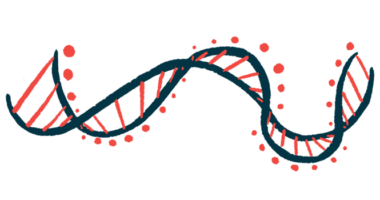How my dad’s facing rigidity in Parkinson’s disease
Despite several strategies to ease the problem, he still feels stiff

One of the more challenging Parkinson’s disease symptoms that my dad navigates is stiffness or rigidity, which makes the mornings hard on him. He does his morning stretches to counteract the problem, but it puts a hamper on his groove.
Sometimes it’s hard to tell if the stiffness comes from a tough boxing class, growing old, or Parkinson’s disease. But we do know that 90% of people with Parkinson’s experience muscle rigidity, so he isn’t alone in his experience.
Muscle rigidity translates into limited mobility and involuntary tightness. It can rear its ugly head in a number of ways, taking hold of your limbs, back, neck, and even your face. It can also show itself differently in each person, sometimes favoring one side or only affecting specific muscle groups. Although the tremor is the easiest symptom to recognize in Parkinson’s, muscle rigidity is actually a primary symptom of the disease. Dad sees the most of that in his limbs as he struggles with tight calves and arms.
How Dad manages his muscle rigidity
Dad implements a few strategies to manage his muscle stiffness. One of those is taking levodopa, which increases dopamine levels to the brain and helps to create more fluid movements. He also stretches regularly, both on his own at home and in class. Strategies that might also help him include a warm soak in the bathtub or in a hot tub, physical therapy, and exercise in general, which boosts muscle mobility.
While reading Parkinson’s News Today, I also learned that loud, startling noises could decrease muscle stiffness, although I don’t think I want to investigate Dad’s startle reflex at this time.
Is it aging, or is it Parkinson’s?
One thing I think about a lot when it comes to witnessing Dad’s Parkinson’s struggle is the difference between aging and Parkinson’s disease progression. Maybe it’s not fair to use my mom (who doesn’t have Parkinson’s) as a baseline while evaluating my dad. But sometimes her aging process does give us clues into my dad’s experience.
When it comes to her muscles, my mom is also stiffer than she once was. Enhanced muscle stiffness is a common occurrence among the aging population as well as among Parkinson’s patients. However, Parkinson’s muscle tightness and stiffness is generally more pronounced, significantly hampering motion and mobility among those it impacts. Dad has described this sensation as “heavy,” saying that it feels like he’s glued to the ground — and it’s difficult for him to fight gravity.
Note: Parkinson’s News Today is strictly a news and information website about the disease. It does not provide medical advice, diagnosis, or treatment. This content is not intended to be a substitute for professional medical advice, diagnosis, or treatment. Always seek the advice of your physician or another qualified health provider with any questions you may have regarding a medical condition. Never disregard professional medical advice or delay in seeking it because of something you have read on this website. The opinions expressed in this column are not those of Parkinson’s News Today or its parent company, Bionews, and are intended to spark discussion about issues pertaining to Parkinson’s disease.








Mrs Alexa Barr
Thank you for this article. Muscle rigidity in my calves and hamstrings is becoming my number 1 problem - particularly as in attempting to overcome it with stretching and exercise I now have inflamed tendons which now make movement even more painful. Additionally when I don't move sufficiently the peripheral neuropathy becomes worse. Battling this disease is becoming more and more difficult.
Brian Woodruff
Good morning Mrs. Barr, I had the exact same thing. I stopped taking the statin my doctor had me on and I feel amazingly better. Before I stopped the statin I had a hard time getting out of bed or even getting up after sitting for a while. I'm 61 and have had PD for 5 years. If you take a statin you may want to ask your doctor about it. Wish you the best.
Stephen Hitner
I recently had DBS and it has helped my rigidity issues.
Tammy D Parsons
Thank you SO much for writing this. My husband has met with so many different type doctors plus to Movement Disorder Specialist and has complained for a couple years to them about his "heavy" thighs feeling like being pulled down to the ground, that is massively uncomfortable and no one had any idea the cause. Paying for MRIs, PT, Vein surgery, etc to no avail. He has finally realized that C/L seems to help some and after reading this, it sounds like it is muscle rigidity that is the cause. Sad there will be no fix, but happy to stop wasting money to try and find out the cause.
Hugh Masterson
Exactly how I feel. Rigidity is horrible. Use treadmills but now I am going to stretch a lot.
Steven
I was diagnosed with Parkinson’s on 2011, two years ago I had gone through DBS, at the beginning I was in the sky, felt like I had no disease, but as time passed, about a year ago I started to feel the freezing of gate, and when I took L/C, diskinsia took hold. Now I have to choose between bad and worse. Except Azilect, I chose not to take medications at all, I walk outside 3 miles a day, p.t, and at home I use a walker or a kane. Try to stay positive always.
Mark Heatherbell
I am trying to work out how to join the conversation, so I can talk about my symptoms, and the unusual medical treatment I am using. I am just seeing if my post will get posted.
Ted DeZurik
This is my wife and her wife. I see exactly what you describe so well. Thank you for helping me have an article to share w others to help them better understand.
You write well. You might want to try your hand at expressing empathy for the care givers of this PD world. It would be encouraging to them.
Ellen A Wolf
I am a caretaker for my husband who has Parkinson’s.He has progressed so much in the last couple of months.
He is 83 and I will be 70 .We have some help,but I am getting beat up by this.
There is no support at this time.
Bob Cooper
I have PD and muscle stiffness is one of my primary concerns and seems to impact primarily my left side. For me it is as difficult to live with as the tremors have on my right side, although not as noticeable to most people. I remember telling doctors before my PD diagnosis about the stiffness and these comments/complaints were always dismissed
Recently my torso is beginning to become stiffer and painful so I will see what the neurologist has to say at my appointment of the 17th. I had the DBS surgery in November/December 2024, so hoping to get some more attention given to the stiffness in one of my upcoming programming sessions.
PeggyMcCombs
Look up Zhittiya Genesis medical. They are doing research in BVI’s using FGF-1 which is a molecule already made by our body. Very promising
Mark Heatherbell
Hi Mary. Do you know anyone who is treating Parkinsons disease with hormones ?
judy Kay Lampton
My biggest problem is in my hips, which do not work at all, so I have a very hard time walking even with 2 posture canes. I also move so slowly; I feel i will never get there and it is very depressing although I am still very social and even attend a line dance every Sunday to watch my friends dance.
patrick sullivan
I too suffer from rigidity, primarily in the back and neck, I find that other than routine exercise NSAID's provide temporary (2-4 hours) relief. for some unknown reason, when I was prescribed methyprednisone (4 mg, 6 day taper) for a tooth ache, my rigidity dissapeared completely 24/7 until the end of the 6 day prescription. it was unbelievable how well it worked. however, this scrip can only be taken 1 -2 times per year. not a long term solution.
Kim Cassady
Thank you Mary Beth for your article about stiffness from Parkinson's vs. Aging. I am 80 yo and just diagnosed with PD earlier this year. In the last several months my back has become very stiff; some days walking is very challenging. Being so old to start with and not experiencing this before, I attribute my stiffness to PD. I hope others will offer their thoughts on this.